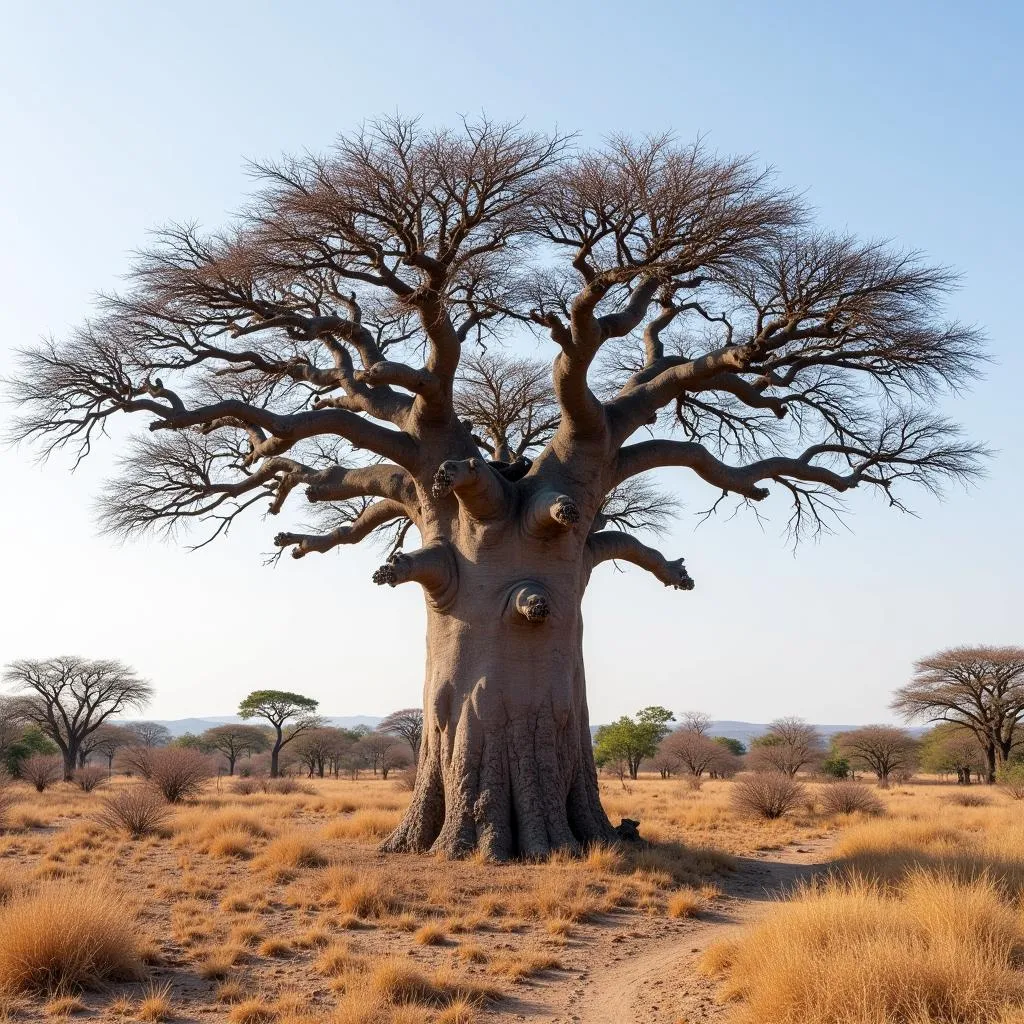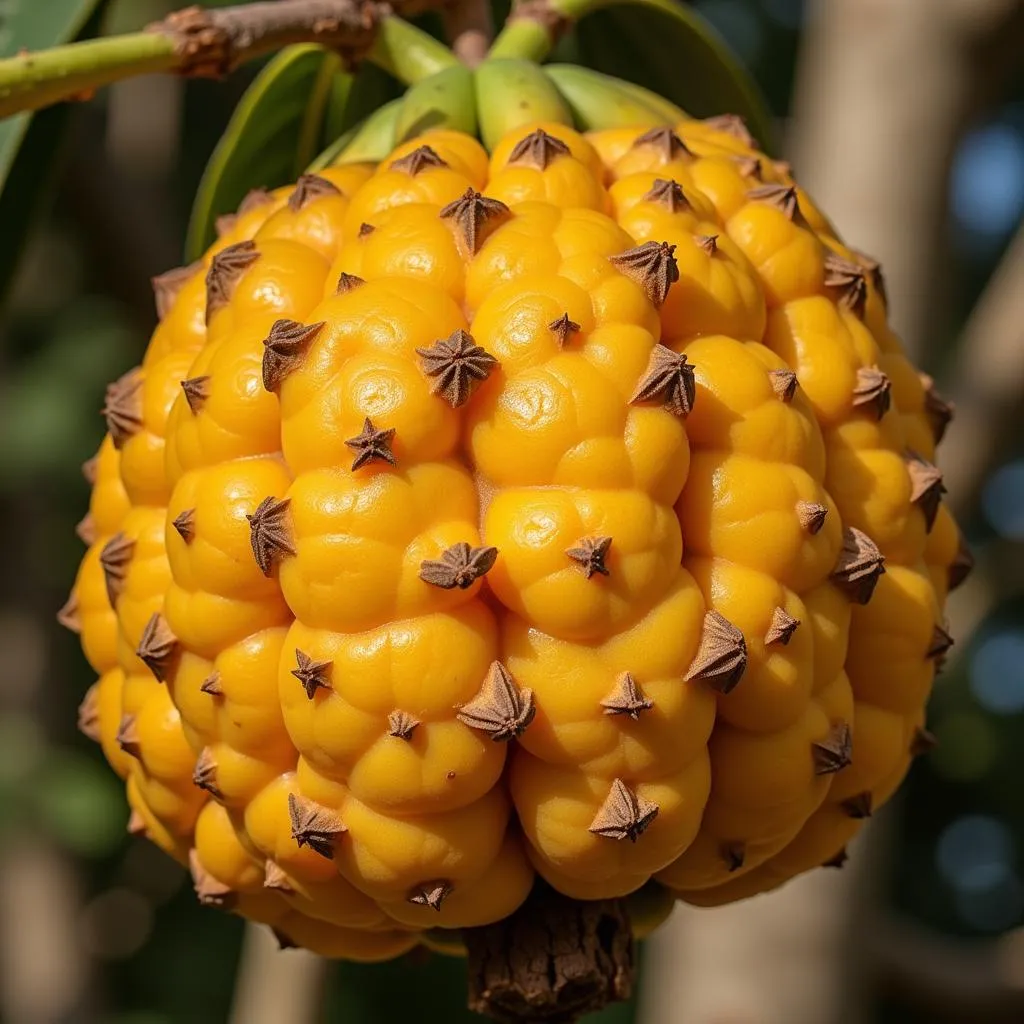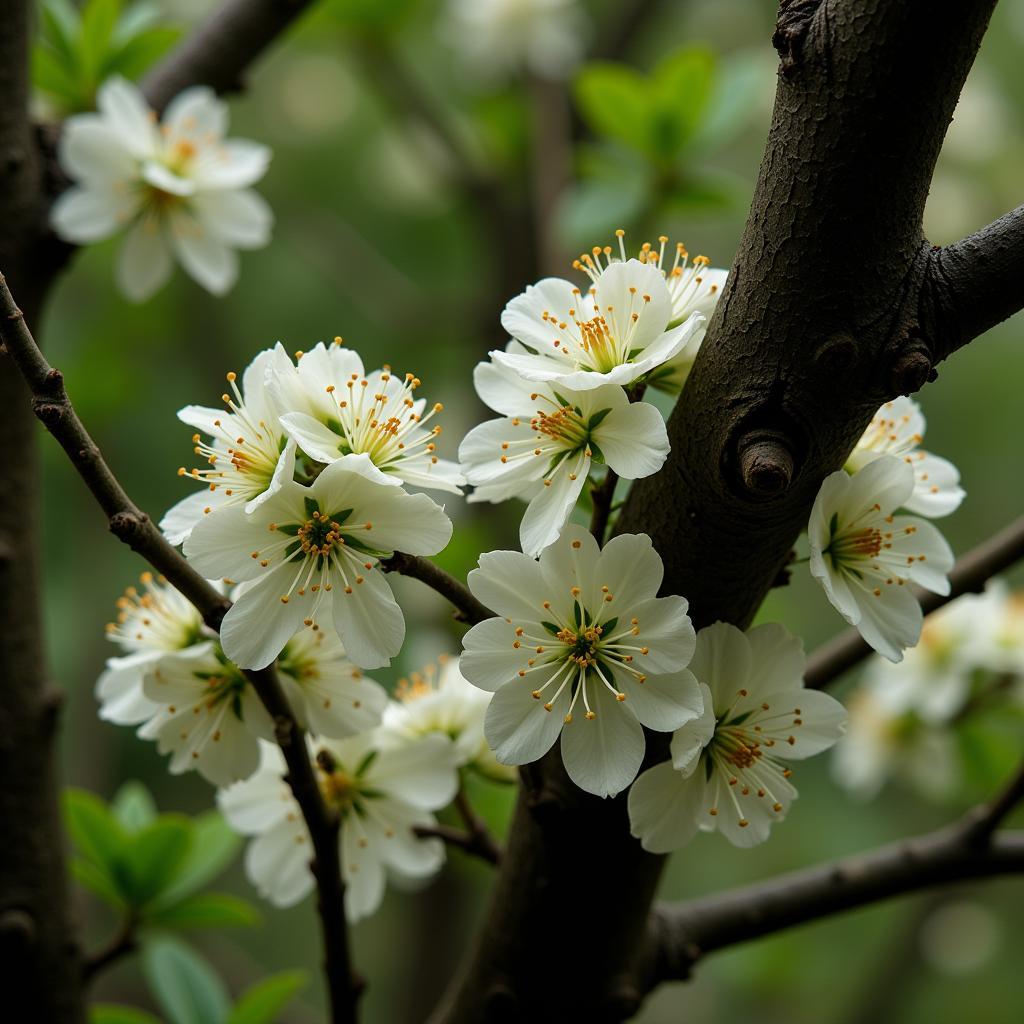The African Baobab Tree: A Symbol of Life and Resilience
The African baobab tree, with its distinctive swollen trunk and branches that resemble roots reaching for the sky, is a symbol of resilience and longevity across the African continent. Known scientifically as Adansonia digitata, this iconic tree has been revered by African cultures for centuries, serving as a vital source of food, medicine, and cultural significance.
A Giant of the Savanna
The baobab is one of the largest and oldest living organisms on Earth. Its massive trunk, which can reach up to 40 meters in circumference, serves as a reservoir of water, allowing the tree to thrive in the harsh, arid conditions of the savanna. The baobab’s remarkable ability to store water is attributed to its unique wood structure, which is composed of spongy, water-absorbing cells.
A Source of Life
The baobab tree is a vital resource for people and animals alike. Its leaves are a nutritious source of vitamins and minerals, and they are often used to make soups, stews, and salads. The fruit, which is known as “monkey bread”, is rich in vitamin C, calcium, and iron. It is eaten fresh or used to make juices, jams, and even a type of beer.
The baobab’s bark is also used for various purposes, including the production of rope, cloth, and even medicine. The bark is known to have antimicrobial and anti-inflammatory properties and is used to treat a variety of ailments, from fevers to diarrhea.
A Cultural Icon
The baobab tree holds a special place in African culture, serving as a symbol of life, resilience, and community. In many African cultures, the baobab is believed to be a sacred tree, and it is often used for ceremonies, celebrations, and gatherings.
A Storyteller’s Canvas
The baobab’s distinctive shape has inspired countless myths and legends. In some African cultures, the tree is believed to be the home of spirits or ancestors. In others, it is seen as a symbol of wisdom and strength.
The baobab’s long lifespan also makes it a natural repository of history. It has been said that the baobab tree is “older than the oldest man”, and it has witnessed countless generations come and go.
The Baobab’s Future
Despite its remarkable resilience, the African baobab tree faces threats from climate change, deforestation, and habitat loss. As the climate continues to change, the baobab’s ability to survive in arid conditions will be put to the test.
Conservation efforts are underway to protect this iconic tree, and there are many organizations working to educate people about the baobab’s ecological and cultural importance.
A Call to Action
It is important that we all do our part to protect the African baobab tree for future generations. By supporting conservation efforts and raising awareness about the baobab’s importance, we can help ensure that this iconic tree continues to thrive for centuries to come.
Frequently Asked Questions
Q: How old can baobab trees get?
A: Baobab trees can live for thousands of years. Some estimates suggest they can reach up to 3,000 years old.
Q: Why do baobab trees look like they are upside down?
A: The baobab’s distinctive shape is thought to be an adaptation to the harsh, arid conditions of the savanna. The swollen trunk helps the tree store water, while the branches resemble roots reaching for the sky, giving the impression of being upside down.
Q: Where are baobab trees found?
A: Baobab trees are found throughout the savanna regions of sub-Saharan Africa. They are particularly common in countries like Senegal, Mali, Burkina Faso, Zimbabwe, and South Africa.
Q: Are baobab trees endangered?
A: While not currently classified as endangered, the baobab tree faces several threats, including habitat loss, deforestation, and climate change. Conservation efforts are underway to protect this iconic species.
Q: What are some other uses of the baobab tree?
A: Beyond food and medicine, the baobab’s bark is used to make ropes, cloth, and even houses. Its hollow trunk can be used as a natural water tank or even as a shelter.
Q: How can I learn more about the baobab tree?
A: There are many resources available online and in libraries to learn more about the baobab tree. You can also visit a baobab tree in person if you are traveling to Africa.
 African baobab tree growing in the savanna
African baobab tree growing in the savanna
 Close-up of baobab fruit
Close-up of baobab fruit
The African baobab tree is a true symbol of resilience, life, and cultural significance. By understanding its importance and supporting conservation efforts, we can ensure that this iconic tree continues to thrive for generations to come.

